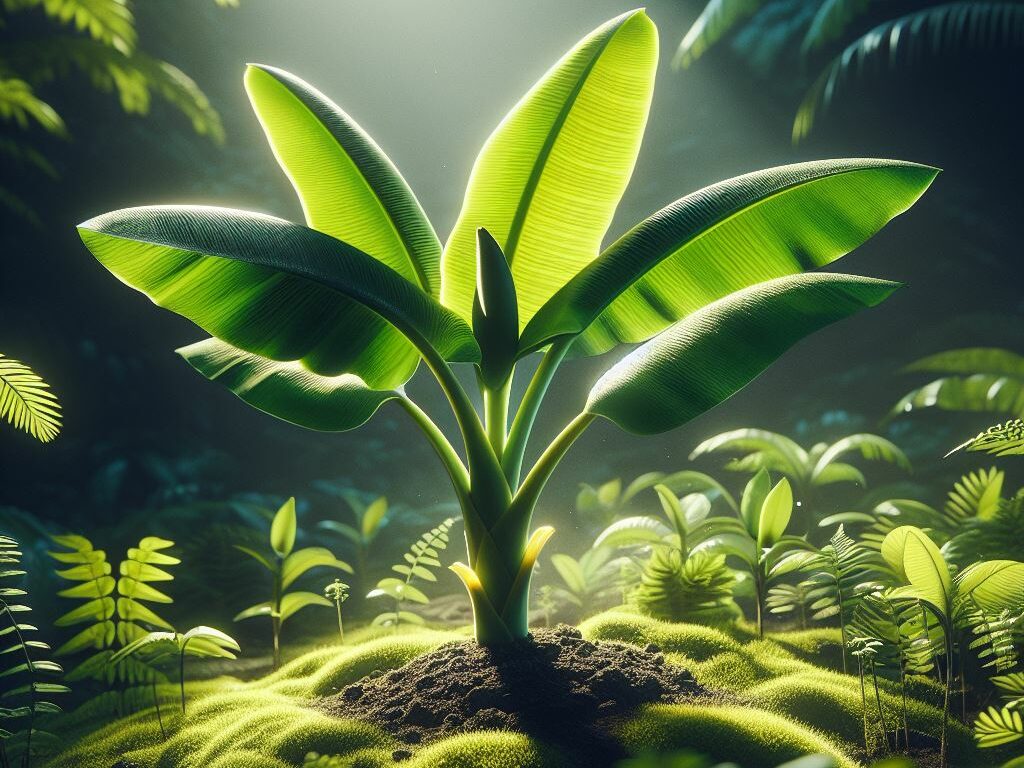Introduction:
Table of Contents
Banana plants, with their lush foliage and delicious fruits, are a delight to cultivate. However, ensuring the right microclimate for young banana plants is crucial for their healthy development. In this guide, we’ll explore seven essential steps to create an optimal microclimate for baby banana plants, setting them up for robust growth and fruitful harvests.

Microclimate for Baby Banana Plants
Strategic Location Selection
Choose a location that receives ample sunlight, preferably 6 to 8 hours daily. Young banana plants thrive in warm, sunny spots with minimal shade obstruction.
Soil Preparation and Quality
Prepare well-draining soil enriched with organic matter. Mixing compost or aged manure into the soil enhances fertility and drainage, providing a conducive environment for young banana plants.
Temperature Regulation
Maintain a consistent temperature range of 75°F to 85°F (24°C to 29°C) during the day and above 60°F (15°C) at night. Protect young banana plants from frost and extreme cold by employing frost cloths or relocating them indoors during colder periods.
Humidity Management
Young banana plants thrive in environments with moderate to high humidity levels, ideally between 50% to 70%. Increase humidity by misting the leaves regularly or using humidity trays or humidifiers in indoor settings.
Proper Watering Practices
Keep the soil consistently moist but not waterlogged. Deeply water young banana plants, ensuring thorough hydration of the entire root zone. Avoid overhead watering to prevent fungal diseases and root rot.
Wind Protection Measures
While young banana plants appreciate gentle breezes, strong winds can damage their delicate leaves and stems. Shield them from strong winds by installing windbreaks or positioning them near buildings or larger plants for natural protection.
Nutrient Management and Fertilization
Feed young banana plants with a balanced fertilizer containing higher levels of potassium, phosphorus, and nitrogen. Apply fertilizer every 4 to 6 weeks during the growing season, adhering to recommended dosages and application methods.
Information-Based Table:
| Aspect | Ideal Conditions |
|---|---|
| Sunlight | 6 to 8 hours of direct sunlight daily |
| Soil | Well-draining, enriched with organic matter |
| Temperature | 75°F to 85°F (day), >60°F (night) |
| Humidity | 50% to 70% |
| Watering | Consistently moist, avoiding waterlogging |
| Wind Protection | Shield from strong winds, provide windbreaks |
| Fertilization | Balanced fertilizer every 4-6 weeks |
Conclusion:
Creating an optimal microclimate for young banana plants is vital for their healthy growth and productivity. By following the seven essential steps outlined in this guide, you can provide your young banana plants with the ideal conditions they need to thrive and flourish, ultimately leading to a successful harvest.
FAQs:
- How often should I water young banana plants?
- Water young banana plants deeply whenever the top inch of soil feels dry to the touch, typically every 2 to 3 days.
- Can I grow young banana plants indoors?
- Yes, young banana plants can be grown indoors if provided with sufficient sunlight, humidity, and warmth.
- Should I prune young banana plants?
- Pruning is not necessary for young banana plants unless removing dead or damaged leaves for aesthetic purposes.
- What pests commonly affect banana plants?
- Common pests include aphids, mealybugs, and banana weevils. Regular monitoring and prompt intervention are key to pest management.
- Can I grow banana plants in containers?
- Yes, choose large containers with drainage holes and use well-draining potting mix. Place containers in sunny locations and water regularly.
- How long does it take for young banana plants to bear fruit?
- Young banana plants typically begin fruiting 9 to 14 months after planting, depending on the variety and growing conditions.
